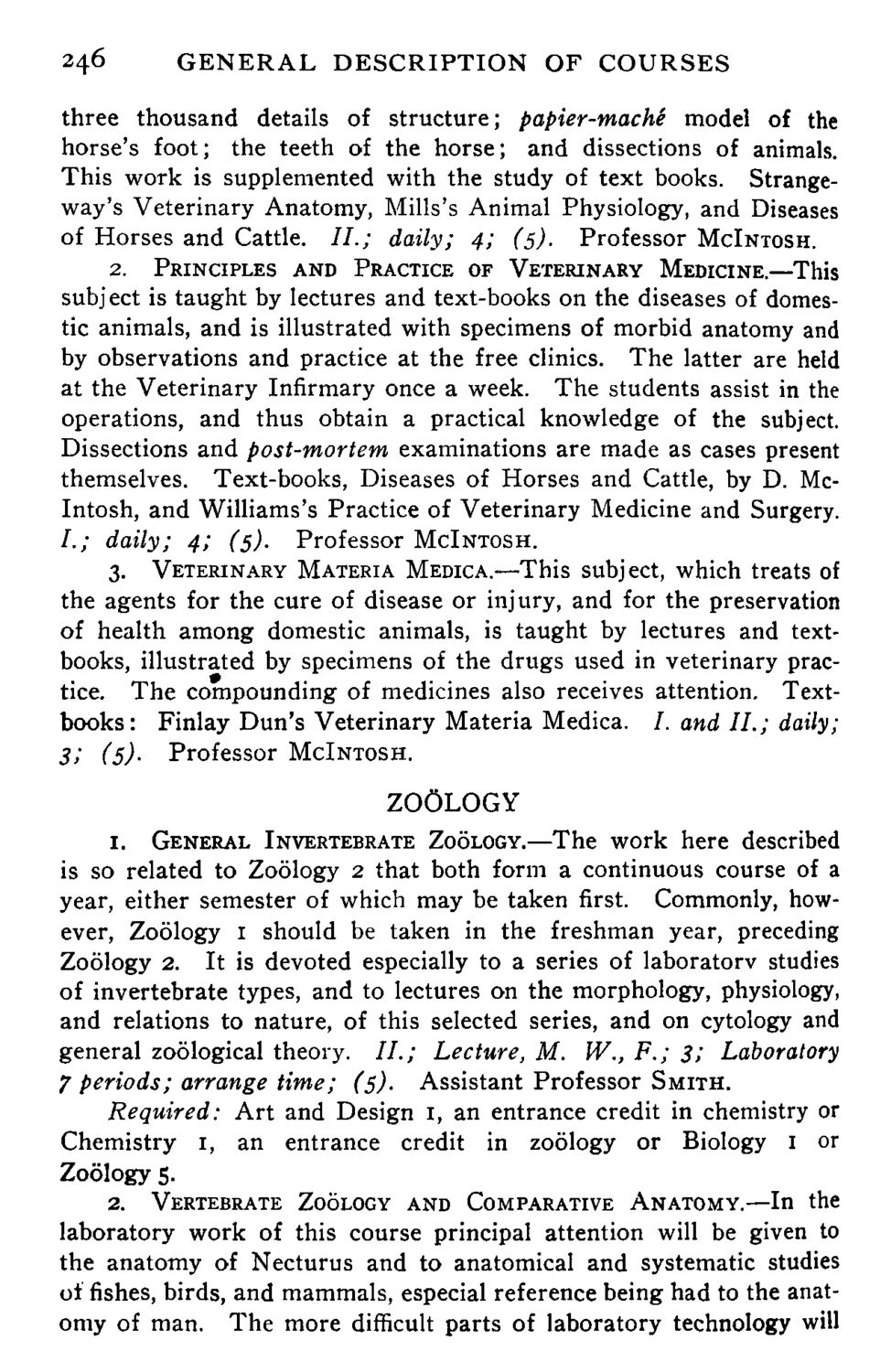Caption: Course Catalog - 1898-1899
This is a reduced-resolution page image for fast online browsing.

EXTRACTED TEXT FROM PAGE:
246 GENERAL DESCRIPTION OF COURSES structure; papier-mache model of the the horse; and dissections of animals. with the study of text books. StrangeMills's Animal Physiology, and Diseases daily; 4; (5). Professor MCINTOSH. three thousand details of horse's foot; the teeth of This work is supplemented way's Veterinary Anatomy, of Horses and Cattle. / / . ; 2. PRINCIPLES AND PRACTICE OF VETERINARY MEDICINE.—This subject is taught by lectures and text-books on the diseases of domestic animals, and is illustrated with specimens of morbid anatomy and by observations and practice at the free clinics. The latter are held at the Veterinary Infirmary once a week. The students assist in the operations, and thus obtain a practical knowledge of the subject. Dissections and post-mortem examinations are made as cases present themselves. Text-books, Diseases of Horses and Cattle, by D. McIntosh, and Williams's Practice of Veterinary Medicine and Surgery. / . ; daily; 4; (5). Professor MCINTOSH. 3. VETERINARY MATERIA MEDICA.—This subject, which treats of the agents for the cure of disease or injury, and for the preservation of health among domestic animals, is taught by lectures and textbooks, illustrated by specimens of the drugs used in veterinary practice. The compounding of medicines also receives attention. Textbooks: Finlay Dun's Veterinary Materia Medica. I. and II.; daily; 3; (5). Professor MCINTOSH. ZOOLOGY 1. GENERAL INVERTEBRATE ZOOLOGY.—The work here described is so related to Zoology 2 that both form a continuous course of a year, either semester of which may be taken first. Commonly, however, Zoology 1 should be taken in the freshman year, preceding Zoology 2. It is devoted especially to a series of laboratorv studies of invertebrate types, and to lectures on the morphology, physiology, and relations to nature, of this selected series, and on cytology and general zoological theory. / / . ; Lecture, M. W., F.; 3; Laboratory 7 periods; arrange time; (5). Assistant Professor SMITH. Required: Art and Design 1, an entrance credit in chemistry or Chemistry 1, an entrance credit in zoology or Biology I or Zoology 5. 2. VERTEBRATE ZOOLOGY AND COMPARATIVE ANATOMY.—In the laboratory work of this course principal attention will be given to the anatomy of Necturus and to anatomical and systematic studies of fishes, birds, and mammals, especial reference being had to the anatomy of man. The more difficult parts of laboratory technology will
|